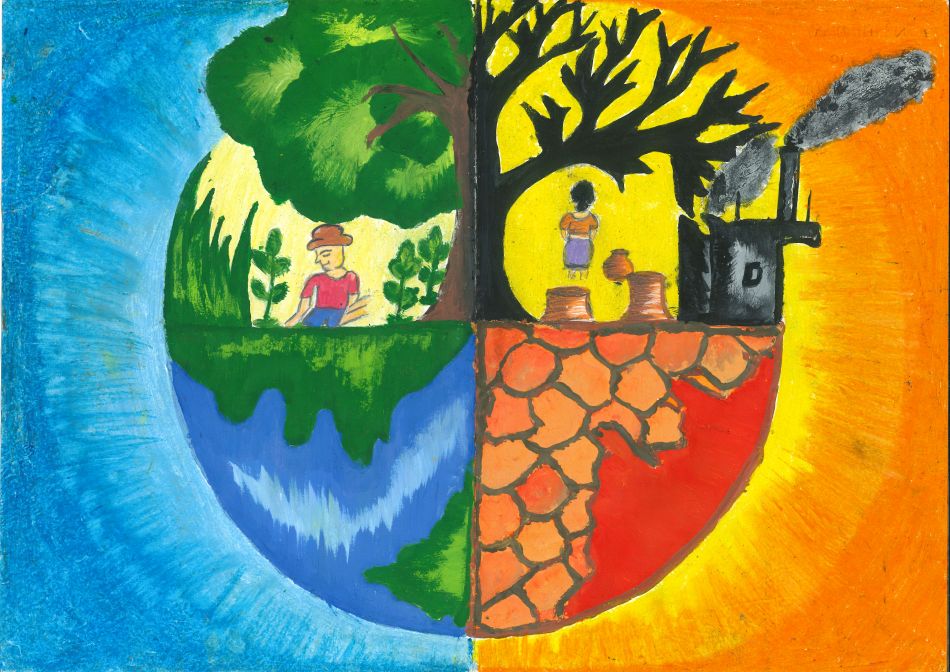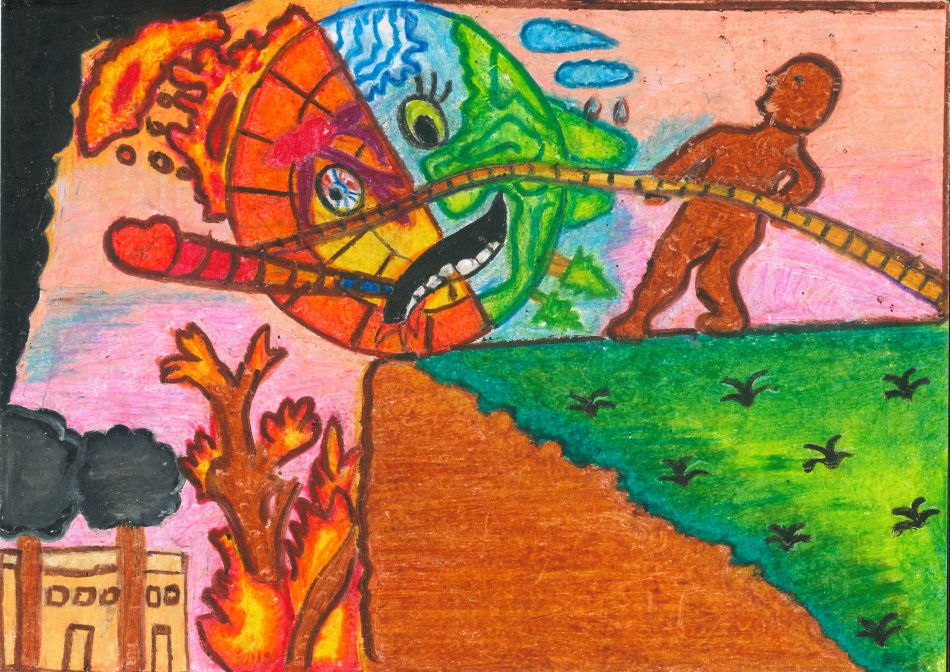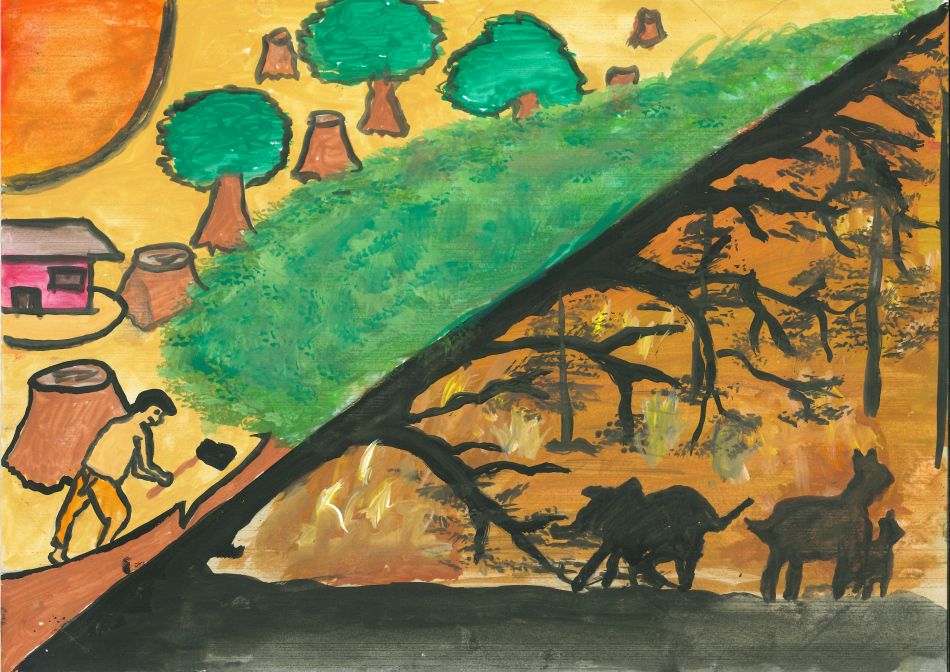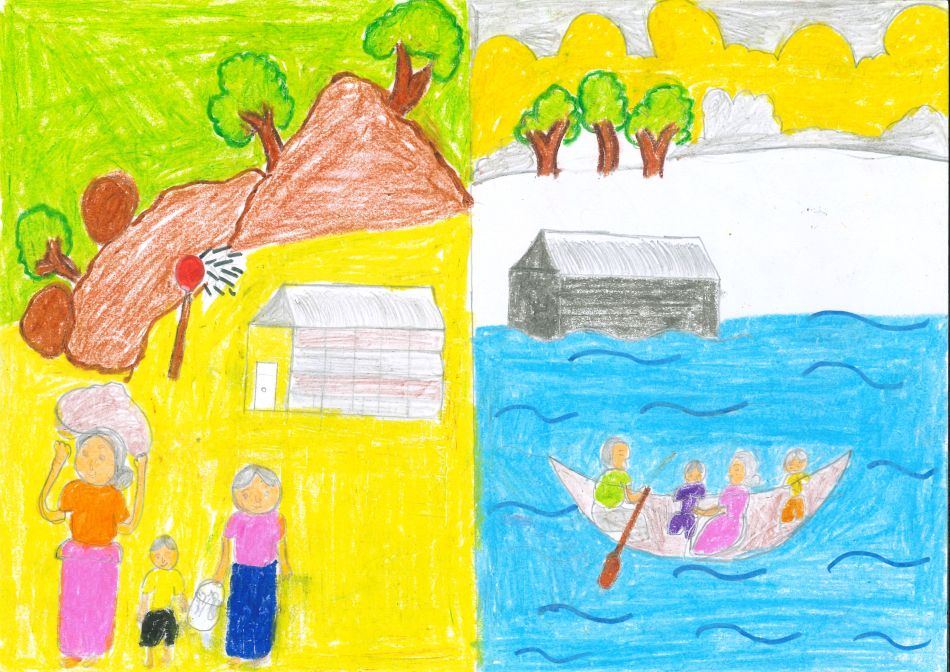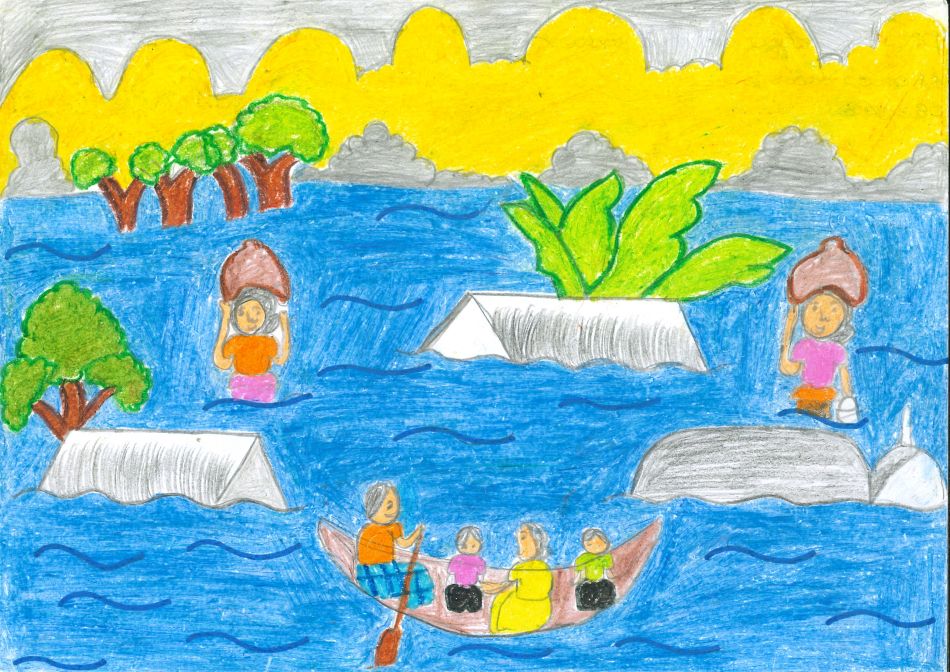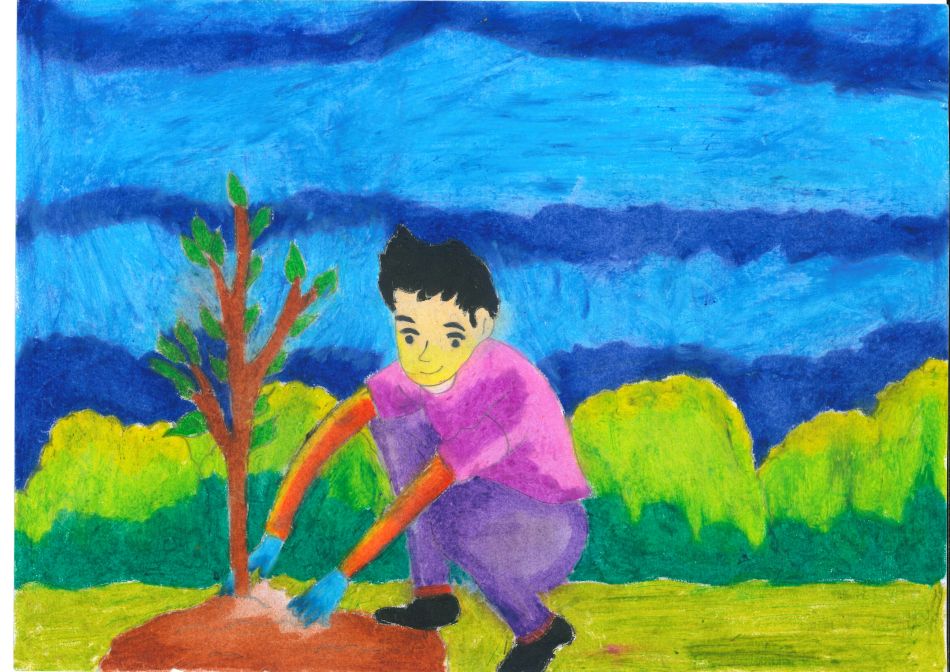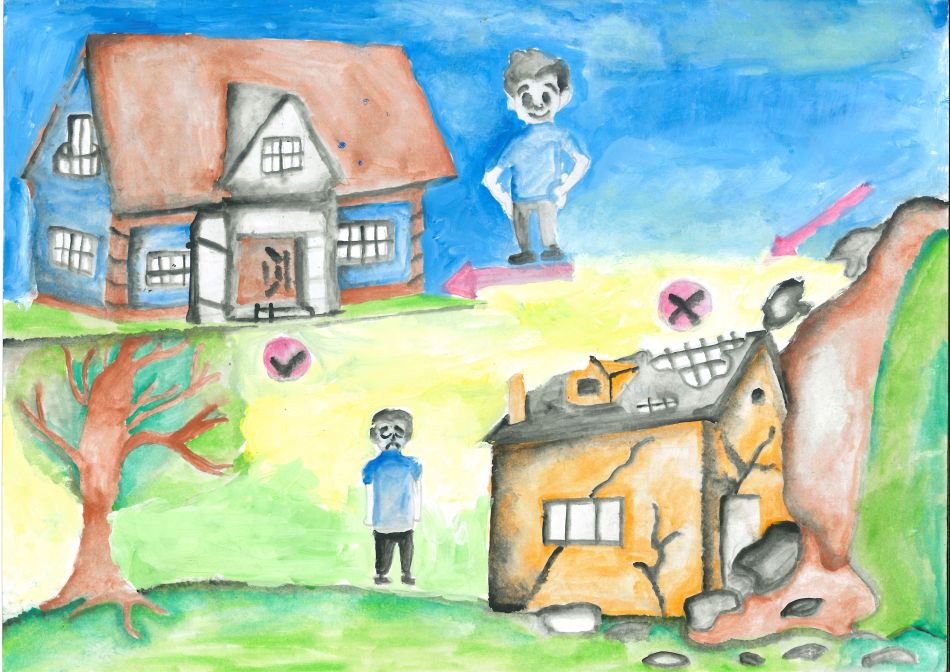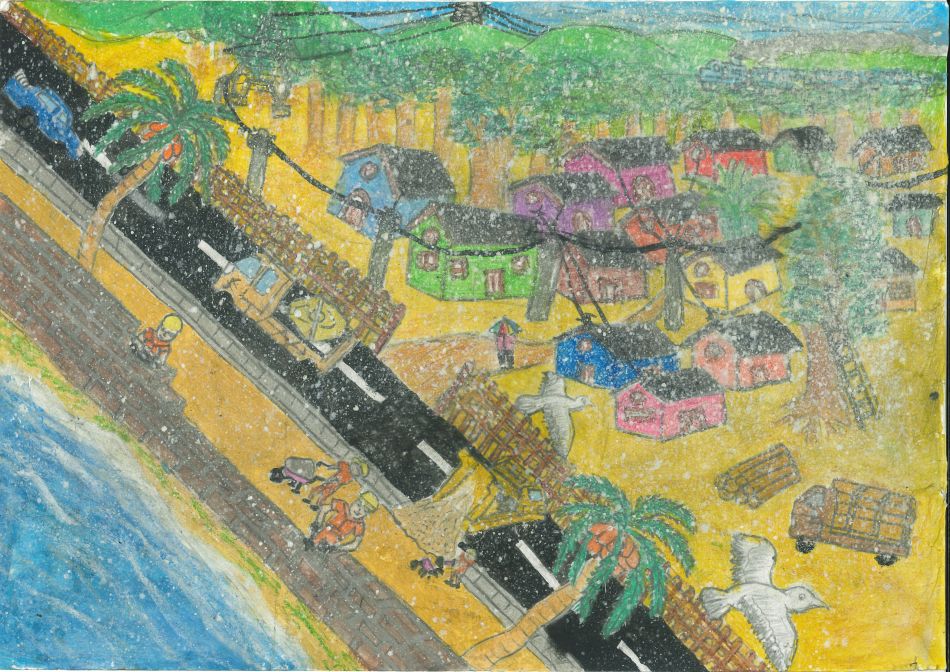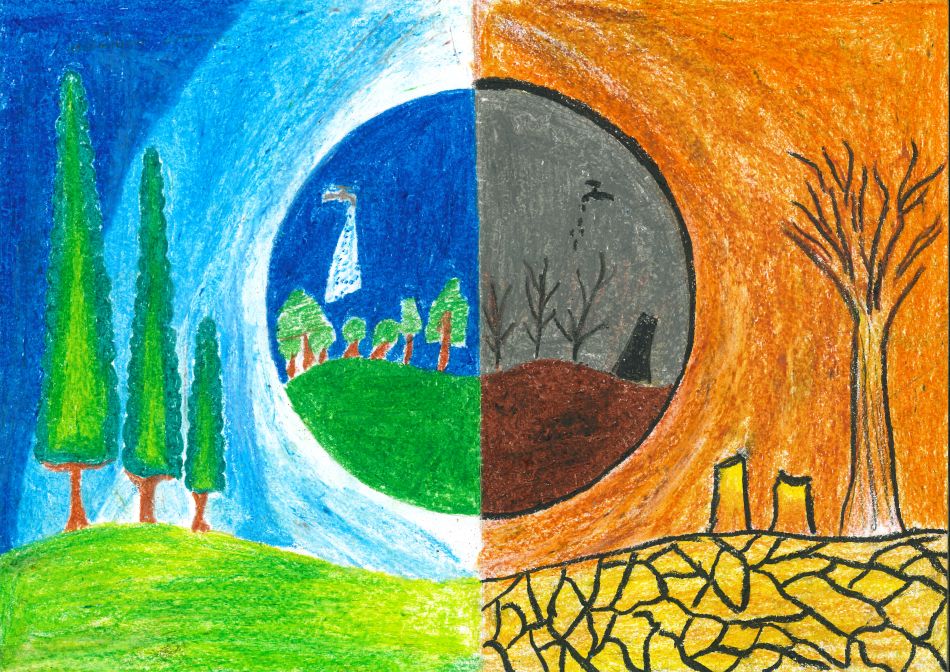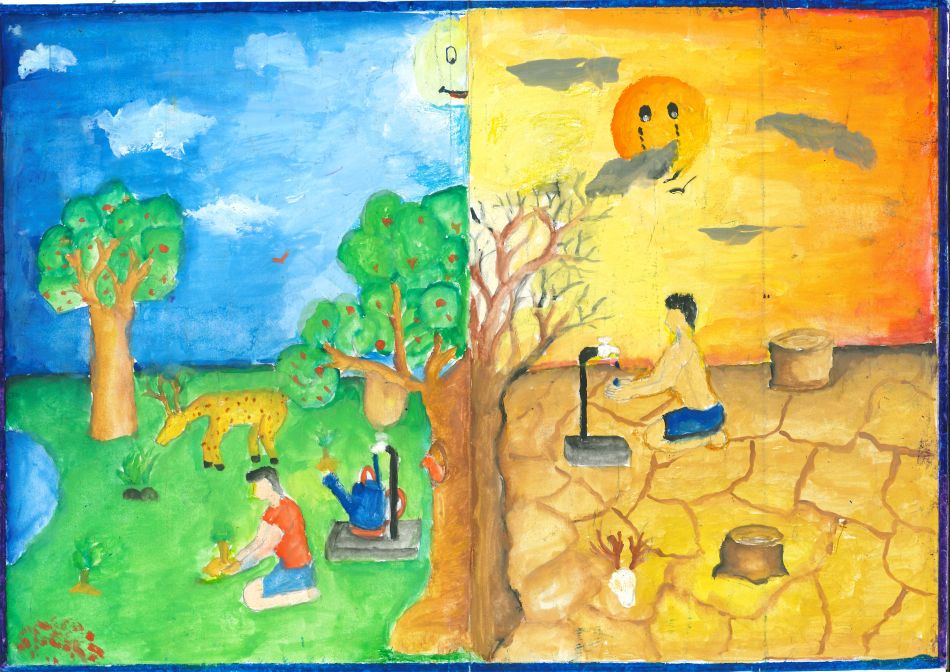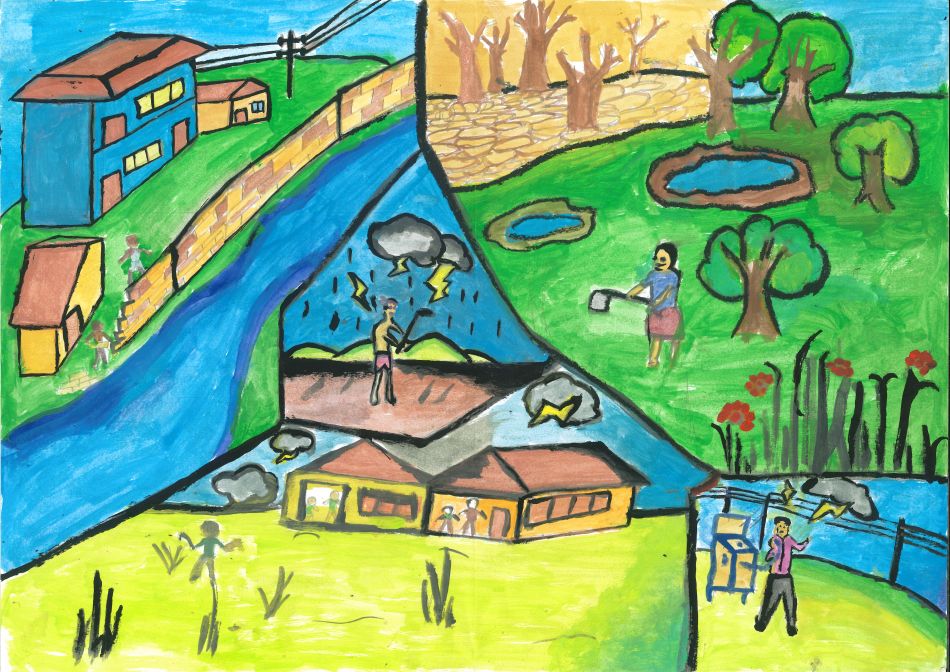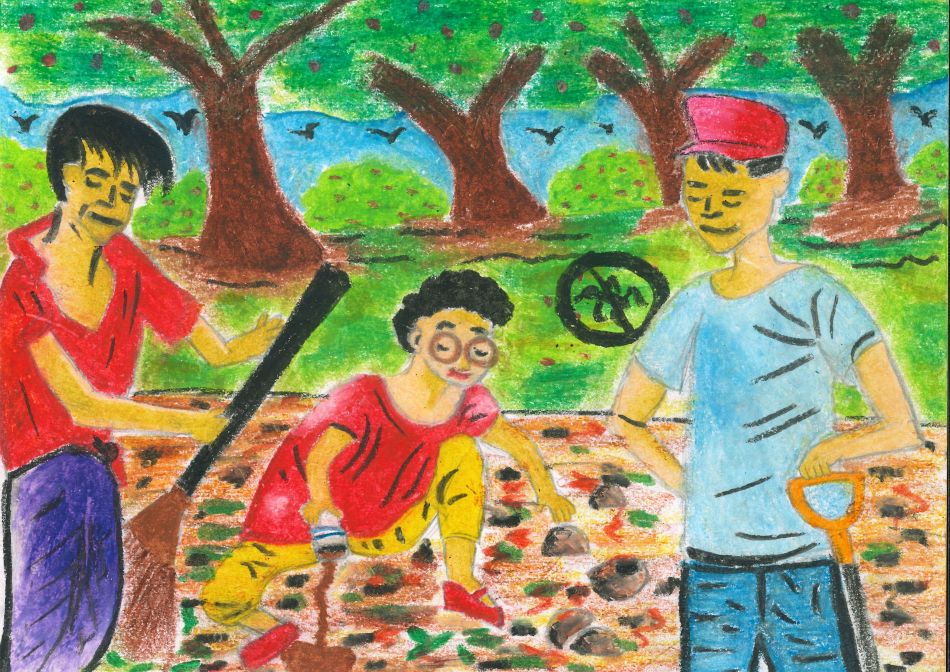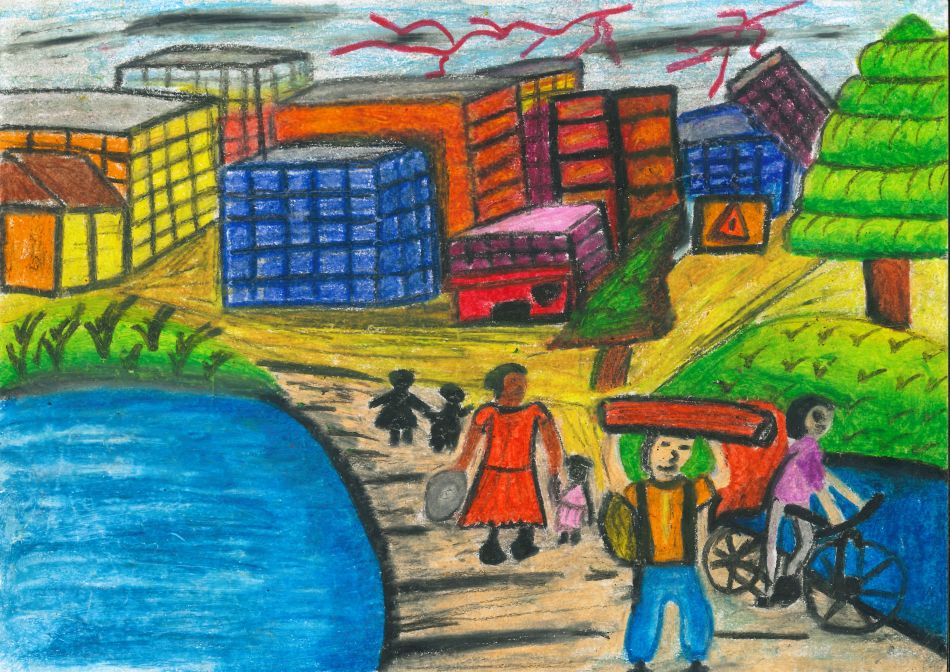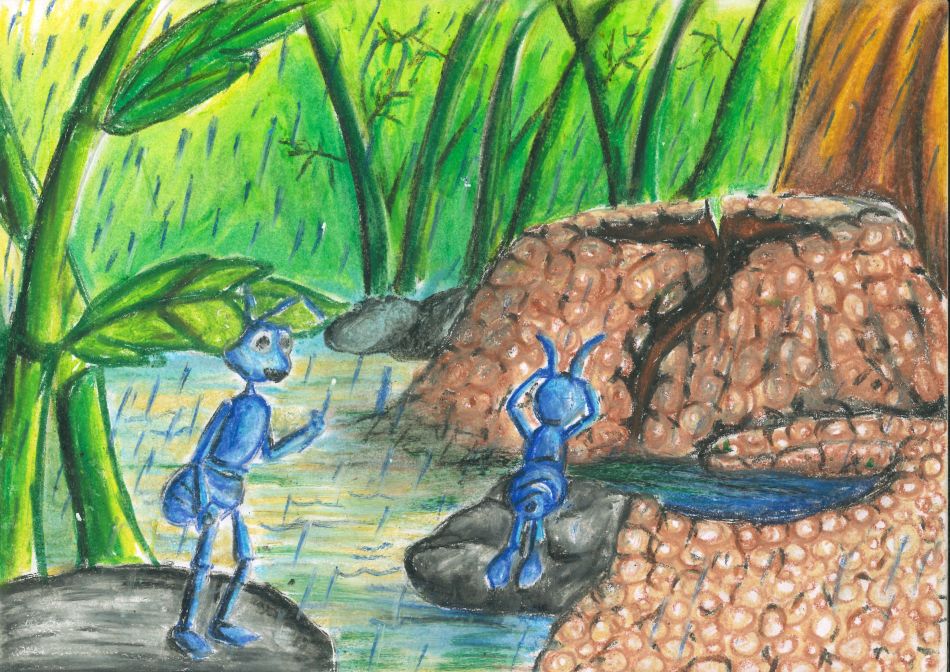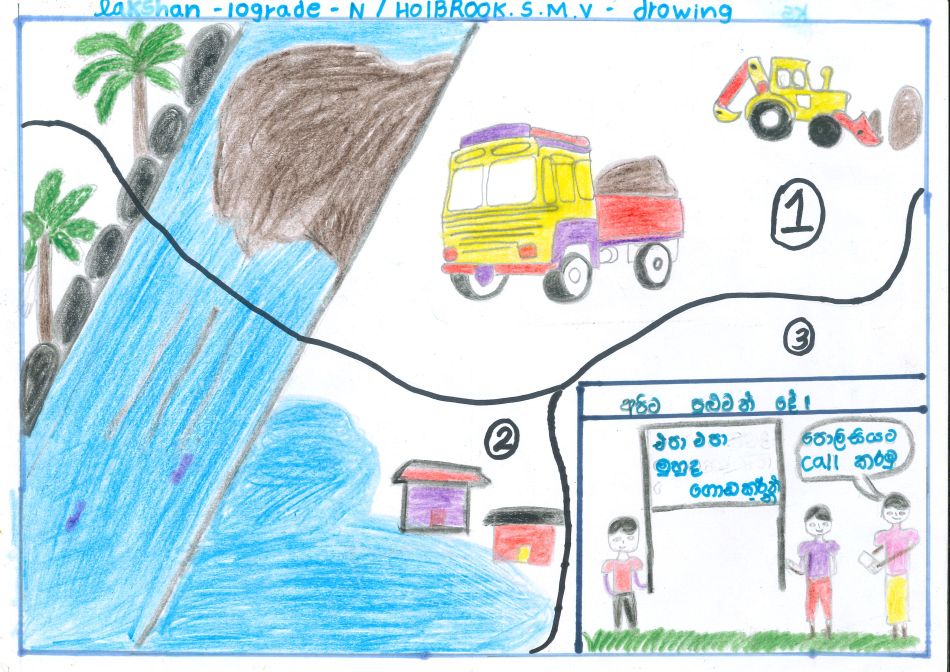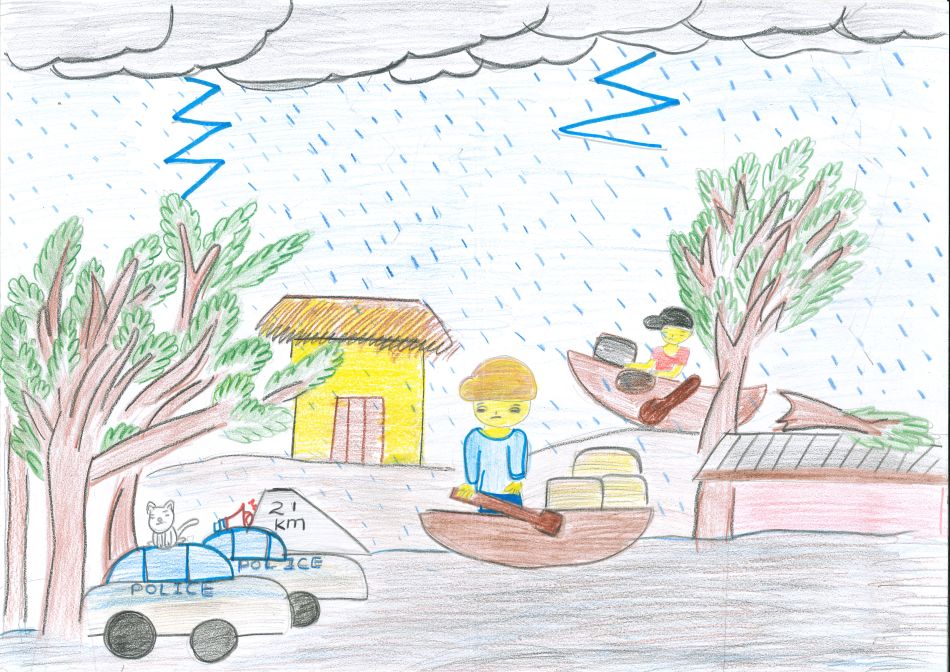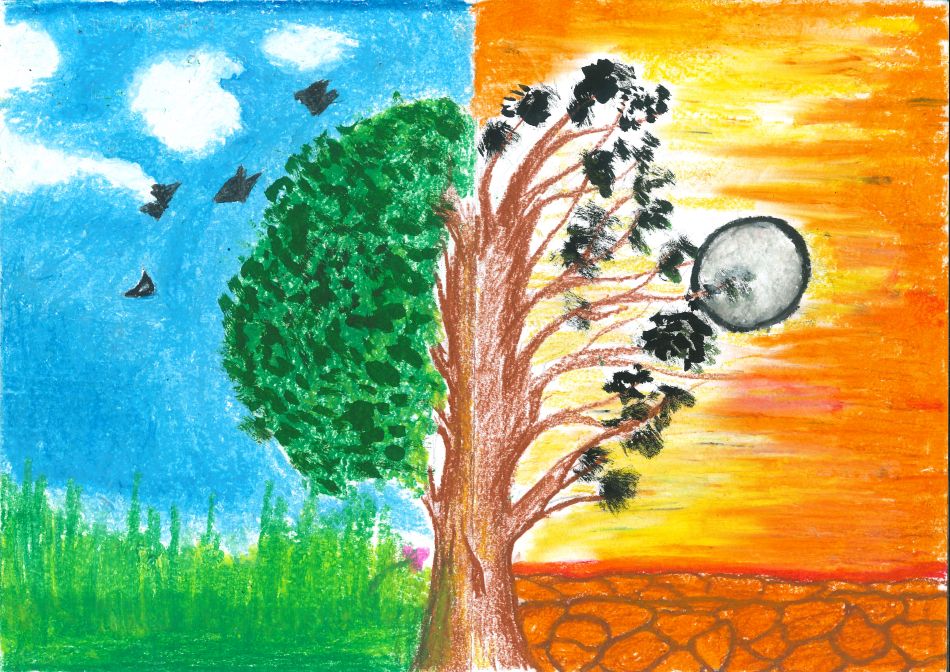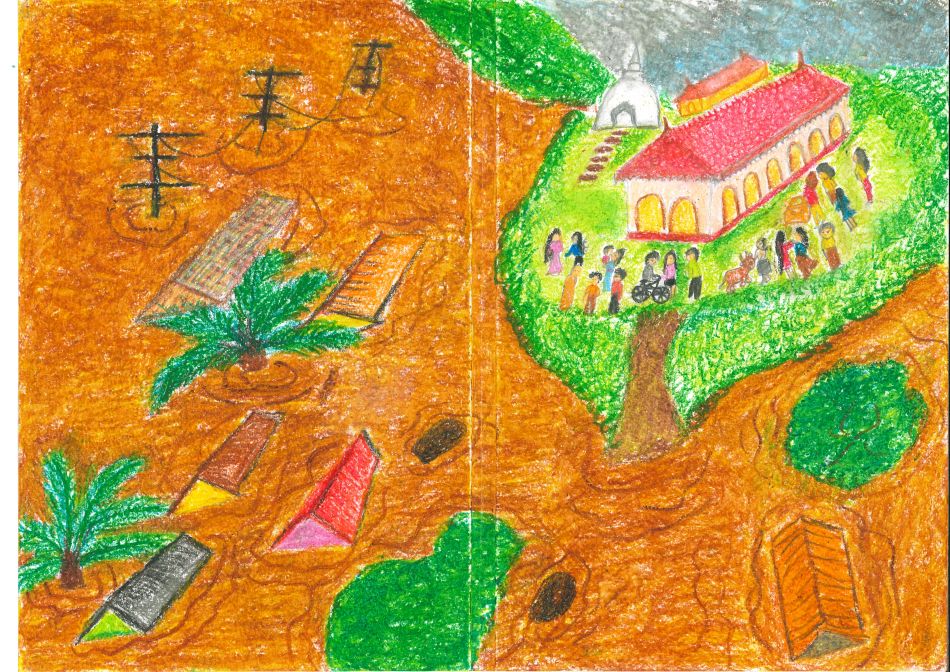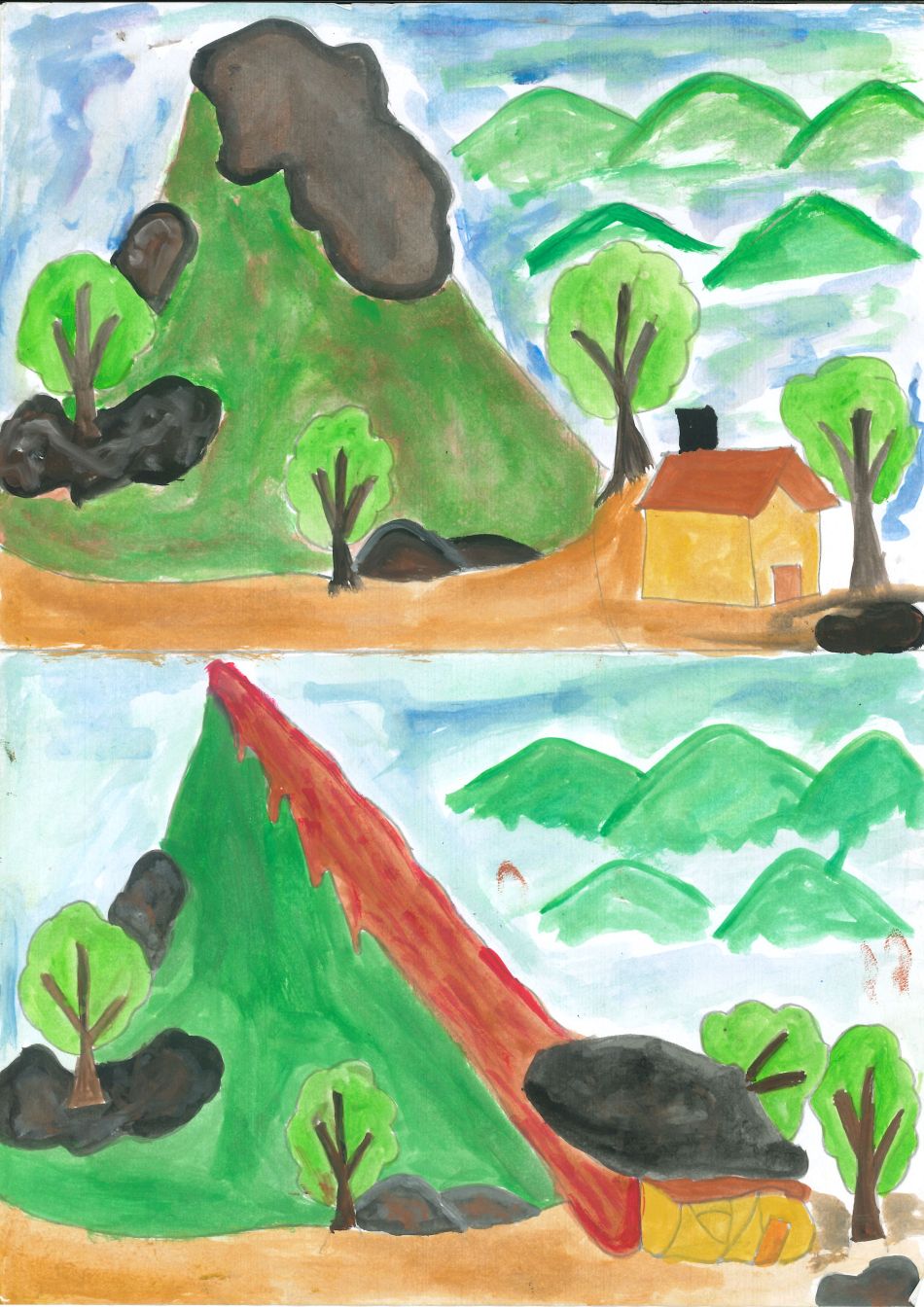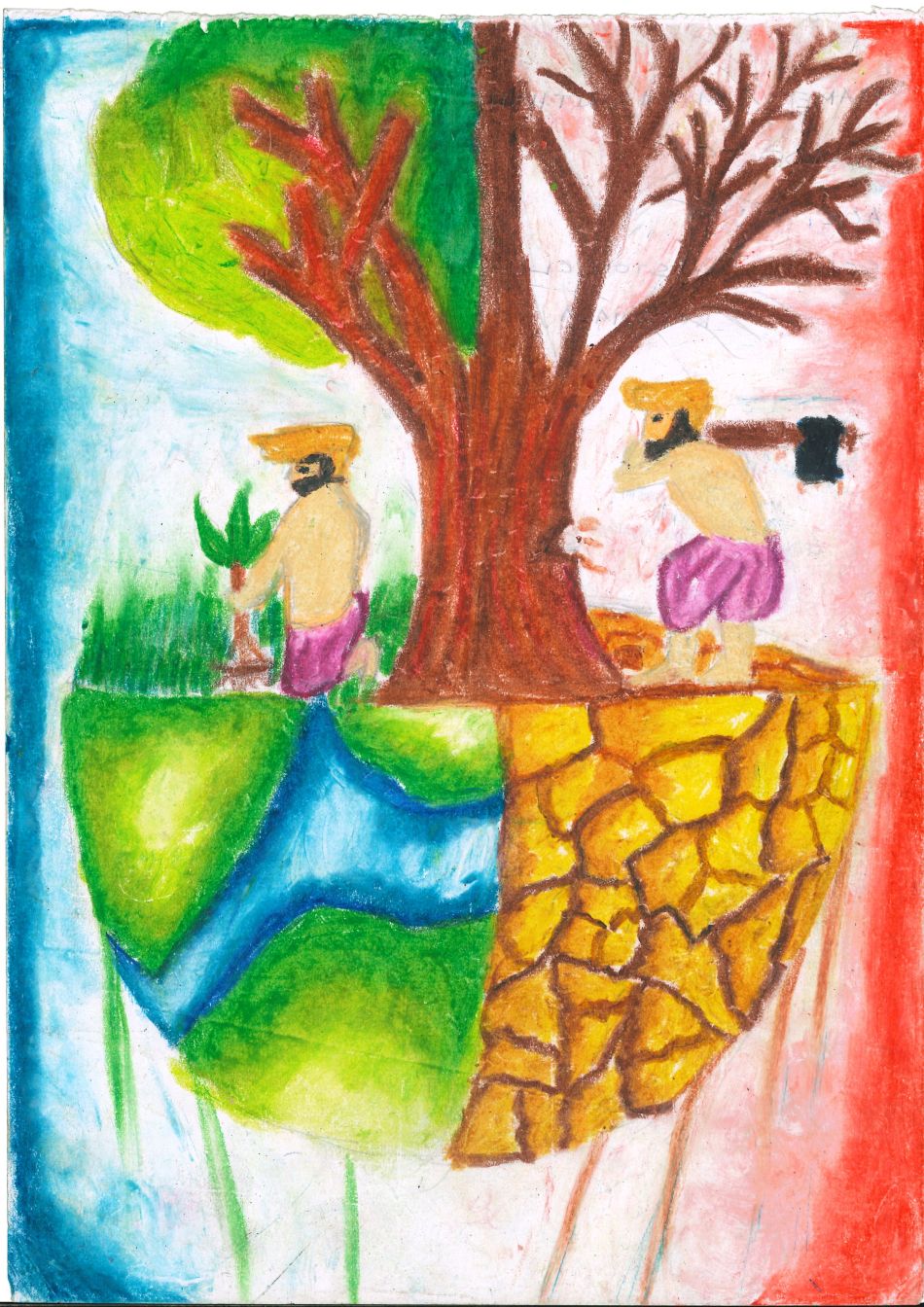Building resilience to climate change and disasters requires bottom-up, community-led response.
By Tania Perera, Senior Communication Specialist

Advocating for inclusive resilience to disaster requires sustained collaboration at local and national level, between communities, humanitarian/development actors, and government authorities. This message was reiterated by speakers marking the International Day for Disaster Risk Reduction (DRR) 2023, a joint initiative of the Disaster Management Centre, the International Water Management Institute (IWMI), World Vision Lanka (WVL), and Sri Lanka Red Cross Society (SLRCS).
Addressing the audience, the winners of the inter-school art and essay competitions, N. Yalini and K. Madusha, respectively, noted the prevalence and intensity of natural disasters, explaining that their creative efforts focused on the need for new technologies, partnerships, and nature-based solutions to prevent and mitigate disasters. Selected schools in the Nuwara Eliya district, where IWMI, WVL and SLRCS work on climate adaptation and disaster risk management, participated in the competitions.
Major General (Retd.) Sudantha Ranasinghe, Director General of the Disaster Management Centre and Chief Guest at the event, noted the existent gaps in policy, governance, and laws which pose challenges to addressing disaster risk. “The present trend of rain started on 26 September. To date, 18 districts and 32,000 families are affected, and 10 deaths have occurred. There are 49 safety centers in operation with 115,000 people. Including compensation, the government has so far spent LKR 28.3 million,” he noted. “Awareness of vulnerabilities and hazards as well as the available safeguards and how to reach help are important. Resilience to disaster begins with awareness. Children are change agents so educating children will take us a long way on the path to resilience.”
“Poverty, inequality, and discrimination are making disasters worse; reducing vulnerability requires addressing these issues,” explained Stanlake Kaziboni, Director, International Resource Development Management at World Vision Lanka. “Careful coordination and planning, greater investments in disaggregated data which is then used for better planning can help to curb the destructive power of hazards. Building resilience means devolved decision-making inclusive of all vulnerable communities, predictable funding that’s easily available, collaborative action and investment, and the promotion of locally led adaptation.”
Giriraj Amarnath, Research Group Leader – Water Risk to Development and Resilience at IWMI in his remarks reiterated that inequality and vulnerability to disasters are two sides of the same coin. “Inequality lies in access to information, timely action, resources and knowledge. This can only be addressed with early warning, early action and finance and, of course, by transferring the risk. Already vulnerable communities face a disproportionate amount of risk, so risk transfer and insurance are key to disaster risk reduction, climate change adaptation, and building resilience.”
IWMI is promoting early warning of and effective response to climate hazards through the Early Warning, Early Action, Early Finance (AWARE) Platform. AWARE is supported by the CGIAR Initiatives on Climate Resilience and NEXUS Gains. Learn more.


